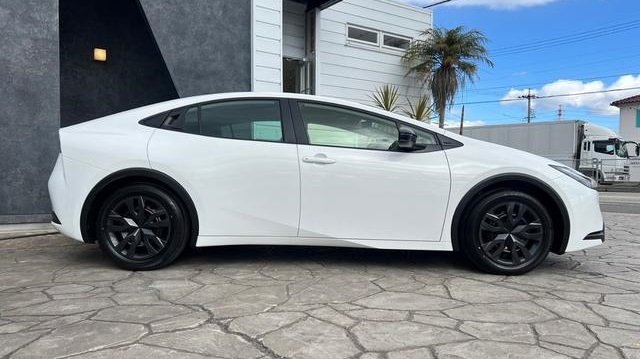A Japanese car auction sheet is important for buyers of used JDM cars. It offers a clear report of your car’s condition, history, mileage and any past accidental issues.
Moreover, reading Japanese auction sheets can sometimes be overwhelming, especially if you don’t know the Japanese language. This blog will guide you on the importance of Japanese auction sheets, which details are included in auction sheets, how to read a Japanese auction sheet, and from where you can get a verified auction sheet of your JDM car.
So, let’s start!
Why Are Japanese Auction Sheets Important?
Before we decode them, it’s crucial to understand the importance of auction sheets.
- They’re issued by professional inspectors.
- They include both exterior and mechanical condition.
- They prevent you from buying a car with hidden issues.
- They help estimate a car’s resale value.
What’s On A Japanese Auction Sheet?
Understanding what’s on the sheet makes reading Japanese auction sheets easier. Here’s what you’ll typically find:
- Auction Grade (e.g., 4.5, R, 3.5)
- Mileage
- Year of manufacture
- Chassis number
- Interior and exterior condition
- Repair history
- Inspector’s comments (in Japanese)
After explaining the details which an auction sheet comprises, we will now decode the exterior & interior grades, vehicle features and diagram codes.
Exterior Grades
The explanation of exterior grades of the auction sheet are as follows.
| Grades | Explanation |
| S | It means that the vehicle is almost new with a registration date of almost one year. The cars with such grades usually have mileage of under 10,000 km. |
| Grade 6 | The grade indicates the JDM cars with exceptional, almost near to new-like condition. It represents that the car has been very well-maintained. |
| Grade 5 | This grade shows that the vehicle is almost new. Also, the parts have not been replaced with no repairs. |
| Grade 4.5 | 4.5 grade shows the reliable conditions of JDM cars. Only one panel of the car can show slight paint imperfections. |
| Grade 4 | The vehicles with this grade can have minor scratches or dents. However, the Japanese car with grade 4 indicates that they have never been involved in accidents. |
| Grade 3.5 | Few scratches and dents are visible on the car’s body in grade 3.5. Furthermore, this grade represents the average condition of a vehicle. |
| Grade 3 | The grade show the rough condition of the car. |
| Grade 2 | It indicates the serious panel damage, rusty, and corroded condition of the car. This grade also shows that the various car parts have been replaced. |
| Grade 1 | This one is the lowest and inferior grade and indicates the major modification in the car. |
| O, A, R | It shows that there is accident damage and repair to the car. |
Interior Codes
The interior codes of the Japanese auction sheet range from A ( best) to D ( worst).
| Grades A-D | Explanation |
| A | It means that the car is without any issues and in present in best condition. |
| B | The B grade means that the car is in clean condition with minimal dirt marks and scratches. |
| C | The C grade shows that the car is clean with cigarette marks. |
| D | The JDM car of this grade is dirty, filthy, smelly, and has significant wear and tear. |
Vehicle Diagram Codes
The vehicle diagram is usually located on the button on the right corner of the Japanese car auction sheet. The explanation of these codes are as follows.
| Diagram Codes | Meaning |
| XX | The XX code means that the panels of the car have been replaced. |
| W | It sometimes means that the affected panel has been painted and paint is not smooth. |
| A1 | It means small scratch. |
| A2 | Medium Scratch. |
| A3 | Large Scratch. |
| U | It means the small dent is on the car’s body. |
| U2 | It means the medium dent. |
| U3 | Large dent. |
| B | This vehicle code indicates the serious dents ranging from B1 to B4. |
| X1 | X1 means that there is approximately 1mm crack on the windscreen. |
| RX | RX means the repaired crack on the windscreen that needs to be replaced. |
| P1 | Minor paintwork damaged. |
| P2 | It is a medium paintwork damage. |
| P3 | It is a large paintwork damage. |
Tips for First-Time Importers
If this is your first time importing, keep these tips in mind:
- Never rely solely on pictures, reading Japanese auction sheets tells you what photos can’t.
- Avoid cars with grade “R” or “RA” unless you understand the repair history.
- Always check if the mileage matches the wear and tear mentioned.
- Use a trusted exporter who provides genuine sheets.
- Verify the sheet—don’t take risks.
Need Help? Get Your Auction Verified by PakWheels!
You can get your car verified through PakWheels Japanese car auction sheet verification. We provide authentic reports and keep you away from scams or any kind of fraudulent activities. With us, the verification can be done easily by entering your chassis number ( e.g. GPX-0798321). After clicking on the submit button, you need to enter the following information:
1.Name
2. Email
3. Phone Number
The payment procedure is through VIA Online bank transfer, Easy Piasa, Jazz Cash, and Debit/credit card. Afterward, the link will be sent you through which you can access the auction report in digital format including the below-mentioned details;
- Auction Grade
- Transmission
- Chassis number
- Mileage
- Color
- Date of Auction
- Auction Sold Price
Summary
In short, reading Japanese auction sheets carefully helps you choose the right car with confidence. It shows you everything about the car’s condition, so you don’t have to guess. If you understand the sheet and take help from PakWheels for auction sheet verification, you can easily avoid bad deals and make a smart choice.






